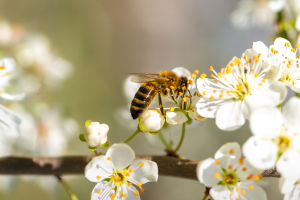Have you ever spotted a long-tailed macaque in the wild? These lively monkeys, scientifically known as Macaca fascicularis, are fascinating creatures that roam forests, mangroves, and even rural villages across Southeast Asia.
Their cleverness, social behavior, and adaptability make them a vital part of local ecosystems. Today, we'll dive deeper into their habitats, diets, behavior, and the challenges they face so we can truly appreciate them.
Appearance and Size
Long-tailed macaques are medium-sized but highly agile. Adults typically grow between 40 and 47 cm in body length, while their tails can stretch 50–60 cm. Males usually weigh 5–7 kg, with females smaller at 3–4 kg. Their tails aren't just for show—they help them balance as they leap through trees, mangroves, and rocky riverbanks.
With sharp eyes, flexible limbs, and skillful hands, they are natural climbers and problem-solvers, able to grab and manipulate food with ease. Observing them in motion is like watching acrobats in the forest.
Where They Live
These macaques are native to Southeast Asia, including Indonesia, Malaysia, the Philippines, Vietnam, Laos. They thrive in forests close to water sources, such as mangroves, primary forests, and secondary forests. But we can sometimes spot them in rural or suburban areas, scavenging near villages or along rivers.
Their ability to adapt to diverse environments is impressive, though they still rely on safe, undisturbed habitats to survive. Healthy forests and mangroves are crucial for their feeding, breeding, and shelter.
Diet and Feeding Habits
The nickname "riverbank monkey" comes from their habit of catching small animals along riverbanks, but their diet is far more varied. They enjoy fruits, leaves, small animals, insects, and occasionally birds. In some regions, macaques have even learned to catch fish to expand their diet. Watching them forage is a treat—we can see their intelligence in action as they peel fruits, dig for insects, or open shells. Their adaptability in finding food highlights their cleverness and survival skills.
Social Life and Behavior
We can often observe long-tailed macaques moving in groups, which offers protection against predators and helps them locate food more efficiently. Communication is key—they use a combination of calls, gestures, and facial expressions to convey messages.
Play is an essential part of their social life; chasing, grooming, and wrestling strengthen bonds within the group. This social structure is critical for survival, especially for young macaques learning essential skills from elders. Observing these interactions gives us a glimpse into their intelligence and emotional complexity.
Challenges They Face
Despite their adaptability, long-tailed macaques face several serious threats. Habitat loss from deforestation, urban expansion, and agriculture reduces their living space. Some are captured for medical research, while others face hunting by locals, further diminishing populations. These pressures can fragment groups, affect breeding, and endanger entire local populations. Without intervention, these clever and social animals could decline rapidly.
Conservation Efforts
There is hope, as many countries have started implementing conservation strategies. Protected reserves and wildlife sanctuaries aim to preserve habitats, while researchers study their behavior to improve management. Interestingly, the International Union for Conservation of Nature (IUCN) lists them as invasive in certain non-native regions, highlighting both their resilience and the need for responsible management.
By learning about their lifestyle, diet, and habitat, we can help support conservation programs and promote coexistence between humans and wildlife.
Why We Should Care
We often overlook how important these monkeys are to their ecosystems. They help disperse seeds, control insect and small animal populations, and maintain forest health. Watching them in the wild reminds us of nature's delicate balance and our responsibility to protect it. When we safeguard their habitats, we also protect countless other species and the overall environment they share.
Why We Love Macaques
Lykkers, long-tailed macaques are more than just clever, playful monkeys—they are vital parts of Southeast Asia's forests, mangroves, and village ecosystems. By learning about their behavior, diet, and the challenges they face, we can better appreciate them and support their protection. Let's keep observing, learning, and helping these amazing creatures thrive in the wild. Every little action we take helps ensure their populations stay healthy, active, and full of life!


